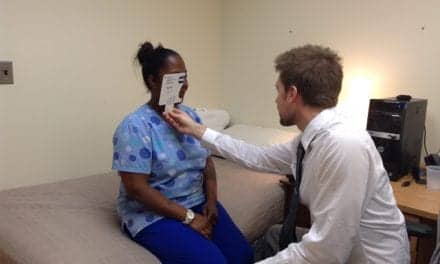In the book How to Read Minds & Influence People, author Carl Christman, MA, a mentalist and professor of communication, examines the science of nonverbal communication and everyday persuasion. The book, designed to give readers the skills to influence people such as patients and clients, provides techniques to read people and understand what they are thinking. The use of nonverbal communication can also be applied to healthcare, Christman says, wherein practitioners can read the cues to better treat patients and understand their needs.
Enhancing Patient Communication
According to Christman, the reading of nonverbal cues can enhance communication with patients and healthcare providers, chiefly because a patient may not be comfortable discussing their personal information. Christman explains that the doctor-patient relationship is unique as individuals are expected to share intimate details with someone they may not know well, and patients can often feel timid in sharing their feelings. “Patients are often hesitant to tell their doctors what they really think. They may be too embarrassed to share how they feel or don’t want to admit that they don’t understand,” Christman says.
As such, Christman says the reading of nonverbal cues can fill this potential communication gap. “Being able to read the patient’s body language and facial expressions make doctors more effective. These nonverbal cues frequently tell more about the patient’s true feelings than what they say,” he says. Christman adds that a good healthcare professional will listen to what a patient says; however, a great healthcare professional reads their patients’ non-verbal cues in order to understand what they are really thinking and feeling.
Specifics of Non-Verbal Cues
A healthcare professional can read a number of nonverbal cues, such as body language and facial expressions, to gain a greater understanding of their patients’ feelings and needs. Specifically, Christman notes that medical professionals can pay close attention to micro-expressions, the quick, involuntary, almost imperceptible facial expressions that people might make when hiding their emotions.
Christman explains, “Healthcare professionals, who are able to read these nonverbal cues, will be able to tell patients have concerns they are too nervous to mention. They will know if people have symptoms they are too embarrassed to mention…and they will be able to identify if people are too shy to admit that they do not understand their course of treatment.”
According to Christman, nonverbal cues can be especially useful in assessing a patient’s lifestyle choices and what is actually going on in their life. A patient may be embarrassed about certain choices, including sexual activity, drug and alcohol use, and sleep habits. As such, he says reading nonverbal cues is a good way of assessing what a patient is omitting. Christman says, “Nonverbal communications reveals much more about what a patient truly thinks and feels. For diagnosing lifestyle choices and subjective symptoms, reading micro-expressions and body language is invaluable.”
Implementation
A number of different areas of medicine can benefit from the ideal of reading the nonverbal cues of patients, including sleep medicine. Christman explains, “Patients often underreport their use of technology before bed, their alcohol consumption, and other factors that contribute to their sleep problems. Having accurate knowledge of these issues would naturally help healthcare professionals in rendering a diagnosis.”
Overall, Christman says healthcare professionals are often more analytical and may not like to rely on intuition. However, reading nonverbal communication does rely, at least partially, on intuition. “My advice to healthcare professionals, in addition to learning more about micro-expressions and body language, would be to follow their instincts in the beginning, even if they cannot identify any specific evidence,” Christman says.
Christman adds, “Reading people’s non-verbal cues is a wonderful tool in getting more information from patients, judging the truthfulness of what they are saying, and determining when any information is being left out.”
Cassandra Perez is associate editor of Sleep Review. CONTACT [email protected]




wow thanks alot . i strungle alot to find this information